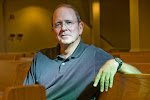Dion sang the haunting words in 1961. They were the lament of a young lover who desperately needed a star upon which to wish. "Where are you little star?" This yearning for love needed the twinkling of a star to ignite the flame of romance.
Well, they've found your star. It may be a little too late for the particular star-gazer of the song but none the less the light has come. It is known as GRB 090423. Let's see how can we work that into the lyrics of a new song?
The letters stand for Gamma Ray Blast. The numbers are I suppose what you would push on the juke box if you want to hear the sound of it all....well...not exactly.
This Gamma Ray Blast is the oldest and farthest away point of light that we have discovered thus far. The "blast" happened about 13.5 billion years ago not too long after the "Big Bang." The light just now got to us after traveling at the speed of light for a little over 13 billion years. And you and I get impatient if our high speed Internet does not flash what we need on the screen quick enough.
Gamma Ray Blasts happen when stars die and explode. The next thing that happens is maybe a black hole of some kind. These blasts are the brightest things that happen in our rapidly expanding universe. Our universe is supposedly made up of 70% dark energy and 25% dark matter. All this dark stuff is supposedly what keeps together the 5% of "regular matter" that reflects light...or visible matter. The dark stuff is the "glue" for the "light stuff."
Another way of putting it, if you are getting lost in the letters and numbers, is this: And God was "brooding over the dark." This expression comes from a literal translation of the first few verses of Genesis when the "earth was formless" and the "wind of God" swept over the deep, dark waters of chaos and formed "something." The "something" that we now call Creation happened when God said, "Let there be light."
The "wind" comes from the Hebrew word for the flutter of a mother bird's wings over her nest. In other words this seems to refer to a kind of cosmic "egg" that the mother bird is protecting as it gets ready to "hatch."
Are you ready for the really exciting part? Astronomers and cosmologists tell us that the whole cosmos got its start from the explosion of a small....uhhh....egg-like something. This all happened about 14 billion years ago and is now called "the big bang."
"Where are you little star?" Finally the star arrives "fresh" from 13.5 billion years of travel. The star proclaims a message overheard from the first "days" of Creation. "Let there be light." God's "brooding" reflects the love of the one who creates all light and even all dark. It seems it takes the dark to keep the light together. And you wondered why there was so much darkness in this life of ours.
"Twinkle, twinkle little star. How I wonder what you are." GRB 090423. Astronomers call the hum that can be heard in radio telescopes "background radiation" left over from the original big bang explosion. I think it is the music of the stars....or...maybe it is God laughing at us with love because after 13.5 billion years we are finally catching up.
And God said let there be light. Thank you, O divine Creator, for "hatching" up such a wonder-filled place from which we can "wish upon a star."
Bless you,
jody jseymour@davidsonumc.org
Subscribe to:
Post Comments (Atom)


No comments:
Post a Comment